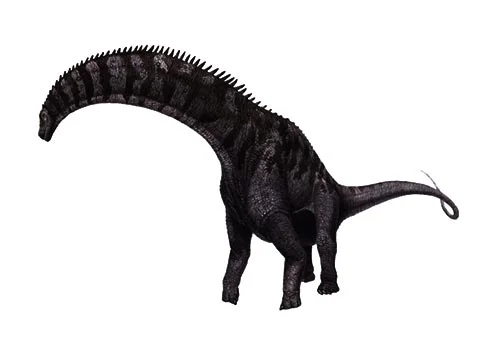Isisaurus (Indian Statistical Institute lizard)

I-si-sore-us
Wilson & Upchurch - 2003
Herbivore
Estimated 14-18 meters long
Sauropod
I. colberti (type)
India – Lameta Formation
Late Cretaceous, 71-65 million years ago
Isisaurus Facts
Isisaurus is indeed a valid genus of titanosaurian dinosaur from the Late Cretaceous period, discovered in what is now India. The name “Isisaurus” is derived from the Indian Statistical Institute, which is located in Kolkata, India.
The type specimen of Isisaurus, ISI R 331/65, was first described by Sohan Lal Jain in 1997 as Titanosaurus colberti, in honor of the paleontologist Edwin Harris Colbert. However, in 2003, Wilson and Upchurch reclassified it as its own genus, Isisaurus.
Isisaurus is known for its short neck and long forelimbs, which distinguishes it from other sauropods. The humerus, or upper arm bone, of the type specimen measures 148 cm, indicating that Isisaurus was a very large dinosaur, estimated to have grown up to 18 meters (59 feet) in length and weighed around 14,000 kilograms (14 short tons; 15 long tons).
The remains of Isisaurus are more complete than those of most titanosaurs, with much of its postcranial skeleton being preserved. However, the skull, hindlimbs, and foot bones are missing. The specimen was discovered in an associated and mostly articulated condition, including cervical, dorsal, and sacral vertebrae, at Dongargaon Hill in the Maastrichtian crevasse of India’s Lameta Formation.
The compact and strong skull of Isisaurus is distinct from the flat and broad skull of Jainosaurus, another sauropod found in the Maastrichtian of India. The angle between the occipital bone and occipital condyle in Isisaurus is also different from that of Jainosaurus. Although the cranium of Isisaurus is similar to those of Apatosaurus and Diplodocus, the bone modifications are quite different.
Isisaurus represents an important addition to the study of sauropod dinosaurs, and its discovery has contributed to our understanding of the diversity and evolution of these fascinating creatures.



